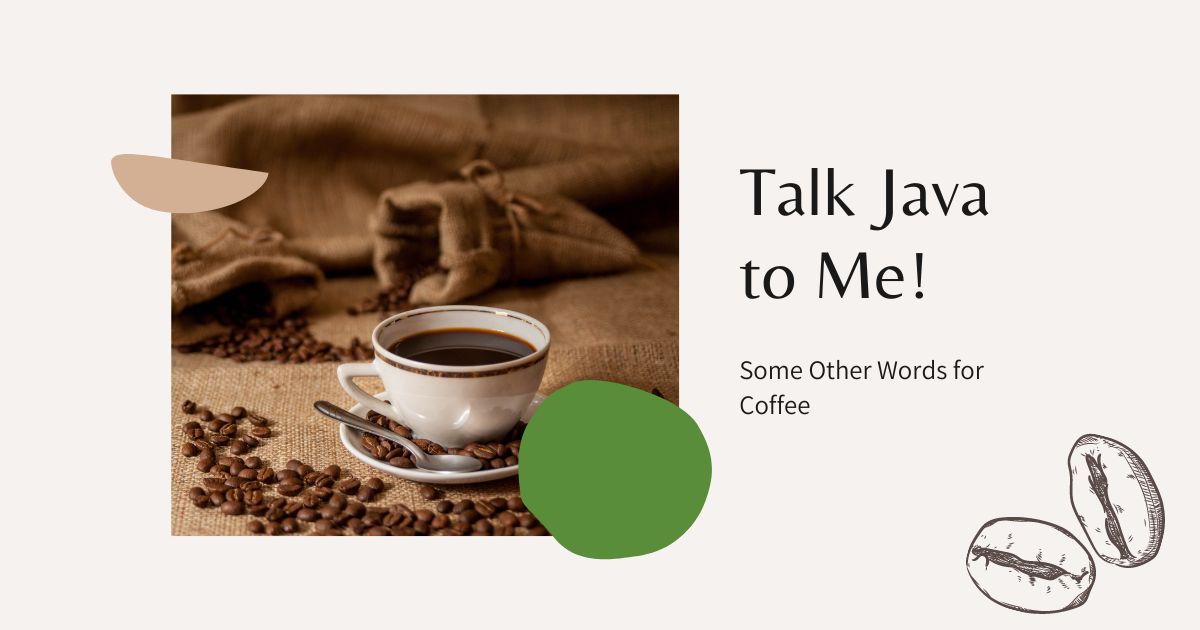All the Coffee Terms
Do you have a vast vocabulary when it comes to coffee descriptions? To assist you in improving your game, the following is the most comprehensive list of other words for coffee.
They include the terms for taste and aroma, words that rhyme with coffee, eight different methods to describe coffee, and even phrases similar to coffee. Plus, a large amount of slang for coffee, nicknames, and terminology is exclusive to the coffee industry.
Helpful Coffee Terms
Acidity
Acidity is a straightforward concept, and it refers to the acidity of the coffee. A quality that you can refer to as tartness or brightness. It has the potential to provide a fruity flavor to coffee.
Aeropress
The flavor of coffee brewed with an Aeropress, a coffee maker designed for a single cup, is comparable to that of espresso. To make the coffee, you use a plunger to press hot water through finely-ground beans.
Affogato
You can make a delectable espresso-based blended coffee drink known as an affogato by combining a shot of espresso with a dollop of ice cream.
Americano
On the surface, an Americano appears to be a straightforward cup of coffee; nevertheless, its preparation involves producing a distinctive flavor profile by combining a shot of espresso with hot water.
Arabica
Arabica is one of the two primary types of coffee plant variations (the other being robusta). It is responsible for over 70 percent of the coffee consumed worldwide and produces coffee of a quality that is significantly superior to that of other countries’ coffee.
Balance
A word used to express how well the acidity, bitterness, and tasting notes raise and compliment each other is “balance.” Balance is a tasting word.
Barista
A barista is a person who brews and prepares coffee and other beverages in a commercial setting.
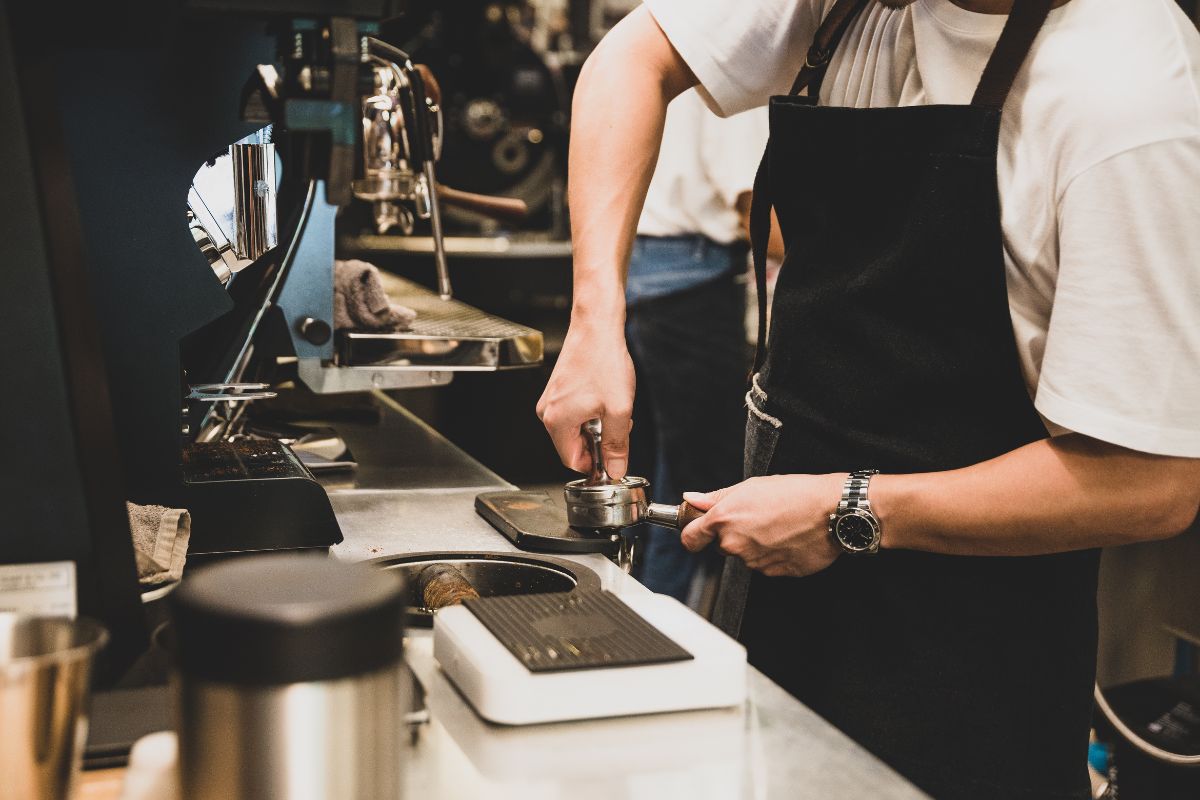
Black Eye
Black Eye is a coffee drink you make by combining one cup of ordinary coffee with two espresso shots. You can serve Black Eyes in a shot glass.
Blade Grinder
A blade grinder is a machine that purports to “grind” coffee beans but, in reality, employs blades to slice the beans up into smaller bits that can then go for brewing.
Blend
The blend is a term used to describe a type of coffee consisting of two or more distinct beans mixed and brewed.
Body
The mouthfeel of the coffee is what you can refer to as its “body,” and it is one of the tasting terms. Coffee can frequently have either a watery or a heavy consistency. Mouthfeel is another term that you can use to refer to it.
Burr Grinder
A burr grinder is a specific coffee grinder that crushes and grinds coffee beans using metal or ceramic burrs. You can use burr grinders to prepare coffee beans for brewing.
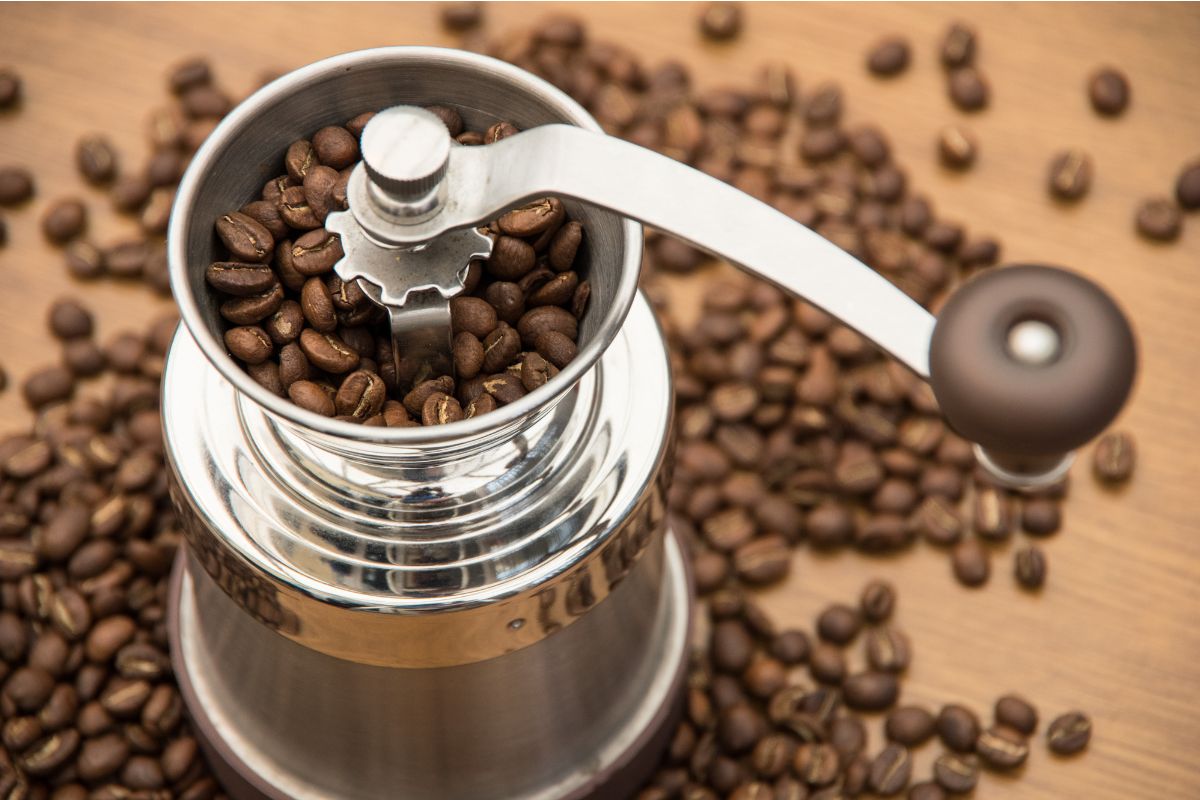
Cafe Au Lait
A cafe au lait is a blended coffee drink consisting of one-third espresso or coffee and two-thirds frothed milk. It is also known as a cafe au lait.
Cappuccino
A cappuccino is a mixed coffee drink that you traditionally make with equal parts espresso, steamed milk, and foamed milk.
Chaff
Chaff is the papery skin that covers the coffee bean, and it needs you to remove it during the roasting process. It causes the finished coffee to have an unpleasant bitter flavor.
Chemex
A Chemex is a brewing gear requiring you to pour hot water over coffee grinds within a dense filter. It makes a cup of coffee that is exceptionally free of sediment.
Clever Coffee Dripper
The Clever Coffee Dripper is a brewing apparatus comparable to pour-over and drip machines. It has a stopper at the bottom of the filter that enables more steeping for bolder coffee and is similar to both devices.
Cold Brew
You can produce a “cold brew” coffee by steeping coffee grounds in water at room temperature or cold for 12 to 24 hours before drinking. It results in a coffee that is silkier and less bitter.
Complexity
Complexity is a term used to describe the variety and nuance of different flavor notes found in a cup of coffee. The more unique flavors you can identify, the higher the level of complexity in the coffee.
Crema
Crema is the frothy, emulsified cream that forms on top of a cup or shot of coffee or espresso after brewing. Typically, espresso is an ingredient in making crema.
Cupping
Cupping is a method that coffee specialists frequently utilize to taste and evaluate several different coffees or several different roast profiles of the same coffee. To do this, make a few servings by pouring boiling water straight onto the ground coffee and then drinking them.
Dark Roast
Dark Roast is the highest amount of roasting you can give coffee beans. Its characteristics are a dark brown color and an oily residue on the bean’s surface. Some people say it has chocolate, almonds, and caramel undertones.
Drip Coffee Maker
One of the most common coffee brewers is a drip coffee maker. This device pours hot water over a basket containing coffee grounds and then into a carafe, typically placed on top of a warming plate.
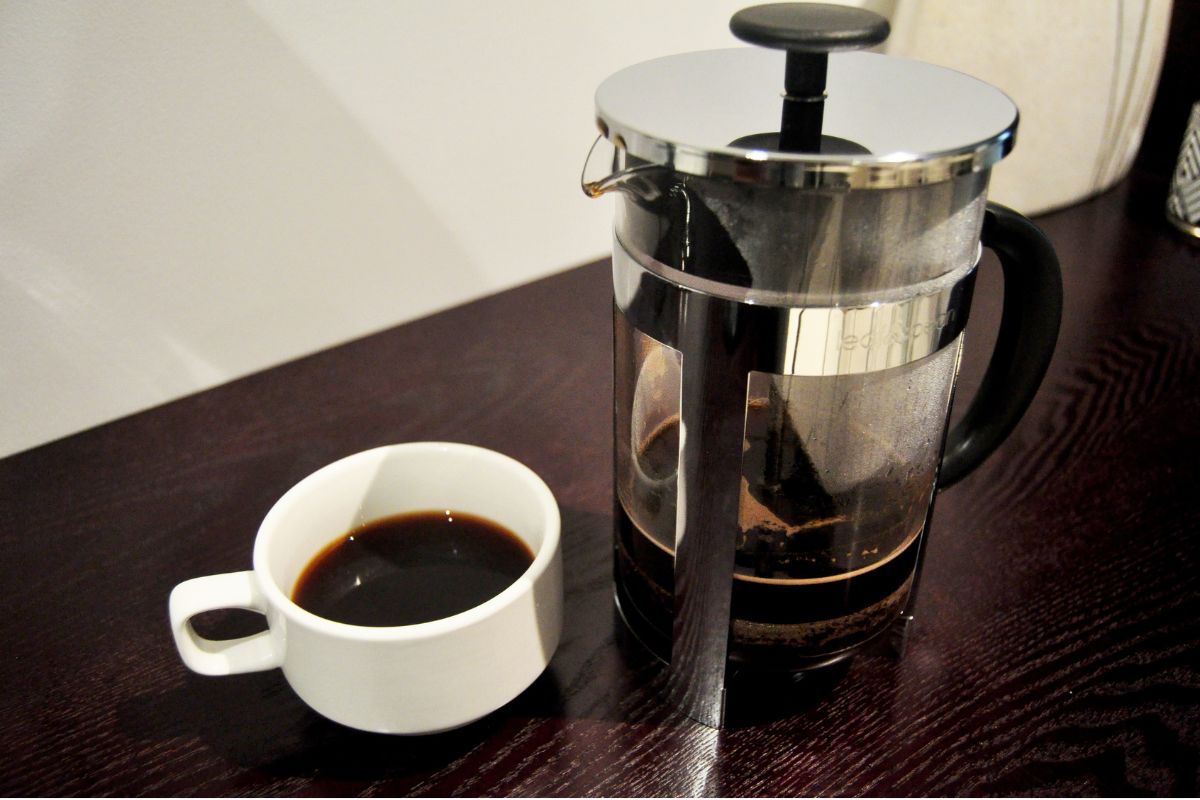
Direct Trade
The term “direct trade” refers to the practice of a roaster or wholesaler purchasing coffee from a coffee grower in an unmediated transaction.
Doppio
The term “doppio” comes from the Italian language and refers to a double shot of espresso.
Dry Process
Coffee beans that you remove from the coffee cherry after the fruit dries go through processing using the dry method, also referred to as the natural process.
Espresso
An espresso is a specific coffee made by forcing boiling water through a puck containing exceptionally finely ground coffee beans. Read our article and find out Can You Make Espresso in a Keurig?

Extraction
During the brewing process, “extraction” refers to removing taste and caffeine from beans by utilizing hot water or steam.
Fair Trade
The term “fair trade” refers to buying and selling coffee beans that ensure a minimum price for coffee that farmers receive worldwide.
Filter Coffee
Coffee brewed with a mesh or paper filter is “filtered coffee.” In contrast, “filter coffee” refers to any brewing technique.
Finish
The flavors that linger in the mouth after a sip of coffee is a finish, and s” finish ” describes those flavors.
First Crack
The first Crack is a significant point in the roasting process that you denote by the audible cracking of coffee beans as their internal temperature rises. This cracking indicates that the beans have reached their optimal roasting temperature.
Flat White
A Flat White beverage is comparable to a cappuccino but has more milk.
French Press
The French Press is both a method of brewing coffee and an apparatus for making coffee. The process involves steeping coffee grounds in hot water for a long time and using a plunger with a steel mesh on the bottom to press the spent grounds out of the completed coffee.
Frappuccino
A frappuccino is a deliciously energizing coffee drink that combines shaved ice, espresso, and foamed milk. It frequently has added flavors.
French Roast
The beans’ surface with a French roast is greasy and dark brown. French roasts are often a shade or two darker than dark roasts.
Green Coffee
A coffee cherry’s green seeds carry the name “green coffee.” These have not been through roasting; therefore, their hue is green.
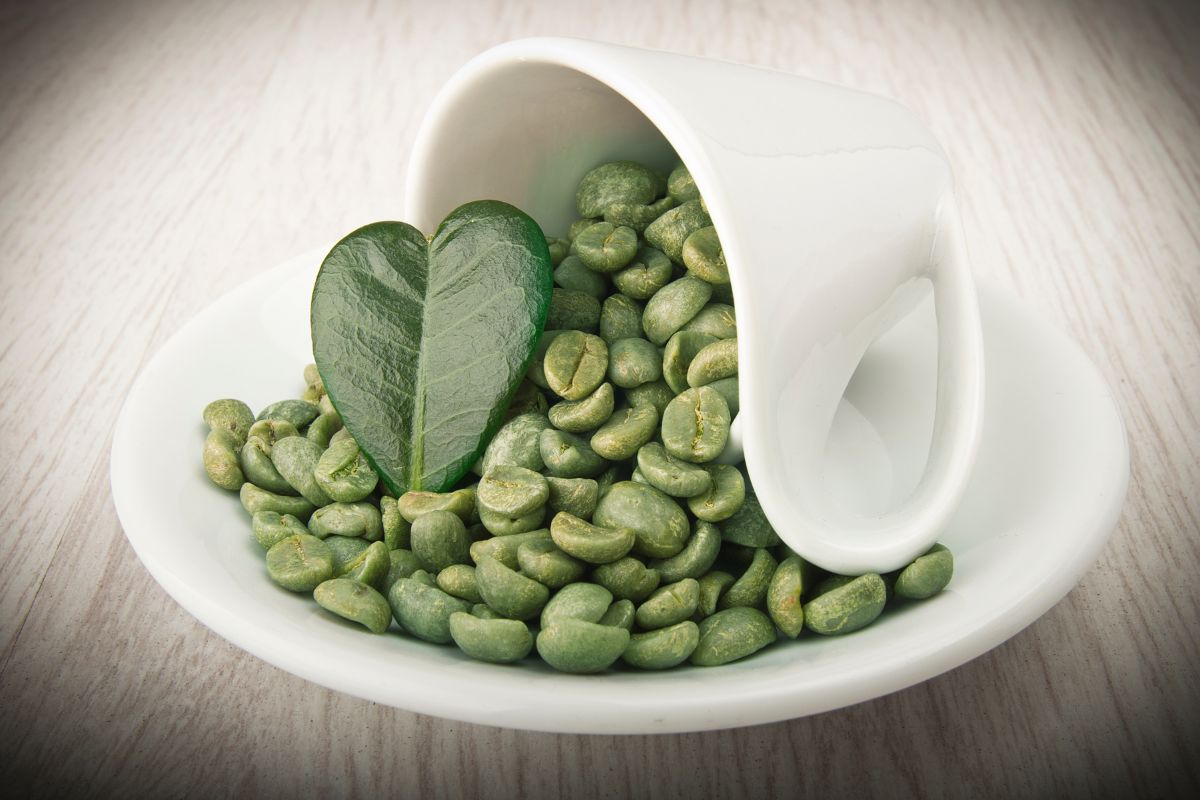
Hulling
Hulling is a step in the coffee manufacturing procedure that involves removing the outer layer of the coffee bean.
Italian Roast
The term “Italian Roast” refers to a highly dark roast profile that is particularly common in Italy and looks practically black and charred.
Latte
A latte is a blended coffee drink traditionally made by combining two or three shots of espresso with twice or thrice the amount of steamed milk. You top the dish with milk froth before serving.
Latte art is a technique that is not exclusive to lattes and involves the creation of pictures on top of the foam of a beverage. The precise pouring of steamed milk typically accomplishes this into espresso. It may also include using cocoa powder or cinnamon.
Macchiato
An espresso and a splash of milk are the two components that make a macchiato, a mixed coffee drink. It bridges the gap between a traditional espresso drink and a cappuccino in terms of flavor and body.
Machine Drying
After separating from the coffee cherry, the coffee beans go through a machine drying procedure involving using motorized drums to dry the beans.
Micro Lot Coffee
Micro Lot Coffee is a term that describes a coffee or batch of beans that come from a single farm and comes from there.
Moka Pot
An espresso brewing device known as a Moka Pot is a pot that sits on top of a burner and uses a drip method to pour boiling water over a puck of finely ground coffee.
Organic
Coffee that you cultivate without the use of pesticides, herbicides, or any other potentially dangerous chemicals is organic. This is the phrase that you use to describe this coffee.
Patio Drying
Patio drying is an alternative to machine drying that involves exposing coffee beans to the sun to complete the drying process on their own.
Peaberry
A peaberry is a little coffee bean that develops inside a coffee cherry with only one seed instead of the typical number of two seeds. It typically results in coffee that is bright, fruity, and acidic in flavor.
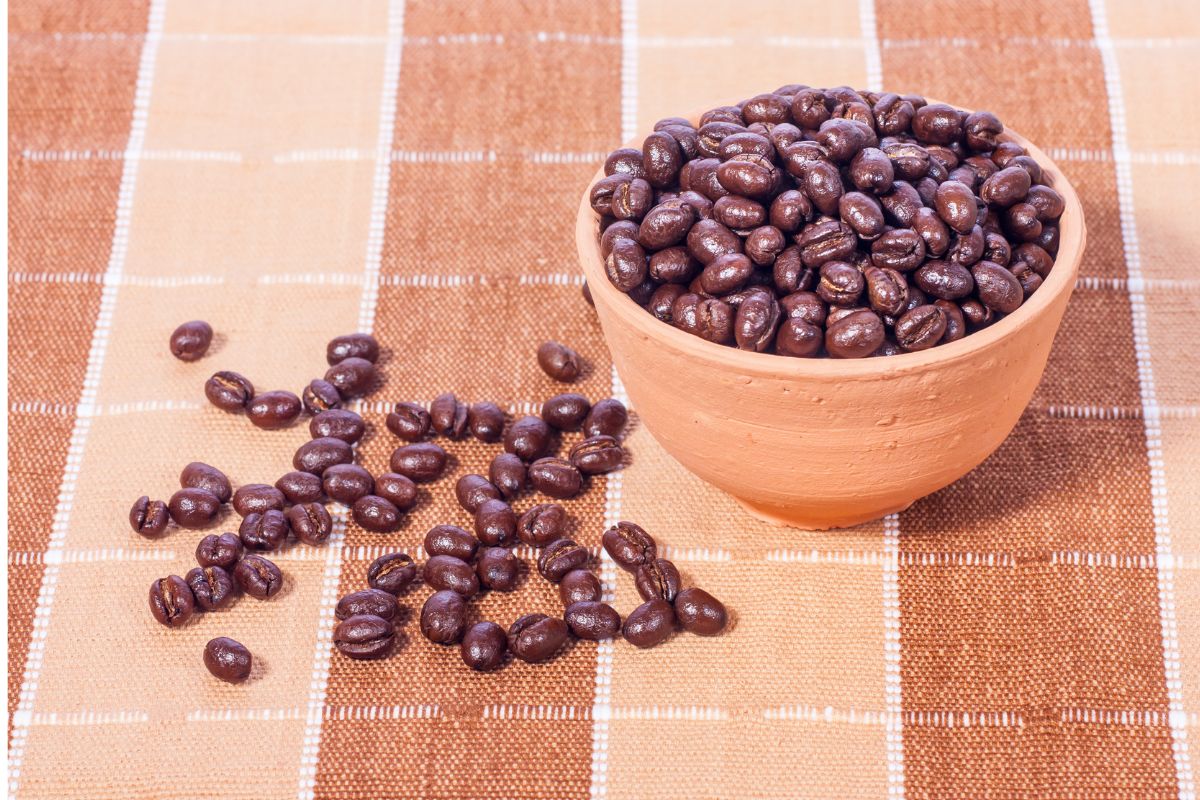
Portafilter
A portafilter is a tiny filter made of mesh used in espresso machines to keep espresso from moving around during brewing.
Pour Over
Pour over is a method of brewing coffee that entails slowly and carefully pouring a thin stream of hot water over a bed of coffee grounds contained within a paper filter. The coffee that results is typically sour and fruity.
Puck
A puck is a concentrated amount of espresso that you use in the brewing process. You push hot water through the puck.
Pull
The term “pull” refers to a single serving of espresso. In early espresso machines, there was a lever that the barista had to pull to operate the device manually.
Pulping
During the preparation of coffee, one of the steps known as “pulping” involves removing the cherry’s outer peel.
Pump Machine
A pump machine is any coffee brewing apparatus that uses a water pump to move or forcibly bring water into contact with coffee grounds. In most cases, it refers to a fully-automated espresso machine that uses a pump to generate the necessary pressure for brewing.
Quaker
Quaker is a phrase that refers to defective coffee beans that do not roast properly and continue to have a pale hue throughout the entire roasting process. These beans have the name “Quakers.”
Red Eye
A cup of standard coffee and one shot of espresso are the two components that make up a red eye, a specific coffee drink.
Ristretto
Ristretto is a shorter shot of espresso, which often has a lower volume and results in a distinct flavor as a direct consequence.
Robusta
Roasting is the process of heating green coffee beans, which results in the development of flavors that are more pleasant and associated with coffee.
Second Crack
Robusta is one of the two coffee plants that can be grown (the other being arabica). It is responsible for the production of coffee of a lower quality than average. It accounts for around 30 percent of all coffee beans grown worldwide.
Second Crack
The second round of audible cracking of coffee beans is the “second crack,” It represents a significant point in the roasting process that you reach for darker roasted beans.
Shade Grown
Coffee produced in the shade, typically to preserve natural vegetation and trees while yet meeting the demands of the coffee market, is shade grown.
Shot
The term “shot” refers to a single “draw” of espresso and typically ranges from one to two ounces in volume.
Single Origin
The term “single origin” describes coffee beans from just one geographical location.
Sorting
The separation of coffee beans into groups based on their size, density, or some other quality is an important step in the coffee processing step known as “sorting.”
Specialty Coffee
You can consider coffee specialty coffee if it is of a high grade and has characteristics such as being rich, full flavor, and complex.
Tamping
Tacting espresso into a puck for optimal extraction during brewing is “tamping.”
Wet Process
The term “wet process” describes the extraction of coffee beans from the coffee cherry before the fruit has had a chance to dry out.
Some Coffee Synonyms
Brew
The term “brew” is frequently substituted for the word “coffee” when referring to the process of producing coffee.
Java
It is generally true that the name Java originated as a reference to a particular mix of coffee emanating from the island of Java in Indonesia. The term “Java Lava” refers to steaming coffee.
Liquid Gold
Coffee has an incomparable value. This value is what makes it earn the nickname “liquid gold.”
Mood Mover
The term “mood mover” refers to coffee’s effects on enhancing one’s mood.
Slang Terms for Your Favorite Brew
The following are several coffee slang terms that many use in describing coffee. You can use them in your daily communication.
Been Juice
Bean Juice is one of the terms for coffee that describes the process of making coffee, which involves combining coffee beans with water.
Brain Juice
The effects of caffeine, which you can describe as mind-clarifying and mind-stimulating, are what we refer to as “Brain Juice.”
Cuppa
Cuppa is a shortened form of the term “cup of,” which originates from the same word you use to describe a cup of tea.
Dirt
The term “dirt” describes coffee with an extremely muddy appearance, a thick and oily mouthfeel, or minimal flavor.
High Octane
High Octane is a term used to describe either extremely robust coffee or contains a significant amount of caffeine.
Jitter Juice
Jitter Juice is a term that describes the stimulating effects of caffeine, which, if drunk at high enough levels, can cause a person to feel jittery.
Leaded
Coffee that contains caffeine carries the name “leaded.” In contrast, coffee that does not include caffeine is “unleaded.”
Liquid energy
The energizing effect that caffeine has on the body is what we refer to as “liquid energy.”
Mud
The term “mud” is most commonly used to describe coffee with a thick texture or unfiltered (such as Turkish coffee).
Unleaded
“unleaded” is an adjective that we use to describe coffee that does not include any caffeine, as opposed to “leaded,” which is an adjective used to describe coffee that does contain caffeine.
Wakey juice
The term “Wakey Juice” refers to the heightened state of alertness that, in many cases, consumption of caffeine produces.
8 Main Ways to Describe Coffee
You will be able to accurately describe any cup of coffee you try by the time you finish reading this page. Why don’t you put this page in your favorites so that you may refer to it when you go to the next coffee shop? These eight descriptors are the ones most commonly used when describing the flavor of the coffee:
- Acidity: This term refers to brewed coffee’s lively and astringent quality.
- The aftertaste is the flavor left on the tongue after the ingestion of coffee.
- Aroma: This is the scent of coffee after brewing.
- Body: The body is the real sensation of the brewed coffee you get in your mouth.
- Flavor: Flavor is another word for the qualities that make up taste. Following is a list of 28 terms describing the coffee’s flavor.
- Fragrance: This is different from aroma in that it describes the scent of the ground coffee before brewing, whereas aroma describes the smell of the brewed coffee.
- Region: The region refers to the country and the area within the land where the beans grew. The flavor characteristics of coffee depend on the terroir, which refers to both the soil and the environment.
- Roast: There are five different roasts to choose from. These shades range from white to light to medium to medium-dark to dark. And one can gather information about them by using one’s eyes, nose, and mouth. Acquire additional knowledge concerning the various roasts of coffee.
The Bottom (Less) Line
The coffee culture can be frightening to enter, particularly when one considers the vast amount of information and words to describe coffee that most coffee fans are familiar with and use daily. When you add slang into the equation, you have an overwhelming quantity of phrases you are unfamiliar with!
What is a person who enjoys coffee supposed to do to learn coffee nicknames and other words related to coffee?
We hope that by reading this list of standard and helpful coffee phrases, synonyms, and slang words, you will be better acquainted with the vocabulary and feel more at ease while talking about this wonderful beverage. Coffee should be not only flavorful but also easy to understand.

